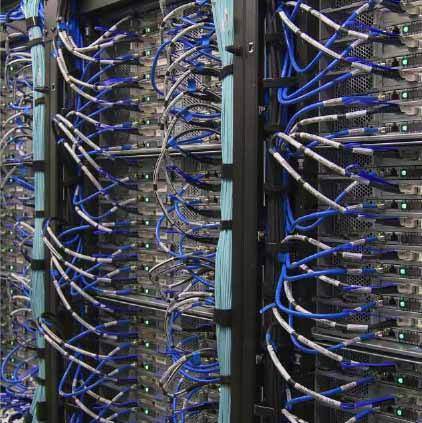
In this guide we look at Disaster Recovery Planning and explain why it is so important to business today.
Welcome to another of our user guides that takes the mystery out of IT for business owners. In this guide we explain what disaster recovery is and why it is vital to have a robust plan in place should the unexpected occur.

Disasters can and do happen. Cyber-attacks, natural disasters, and system failures are just a few of the uncontrollable events that could potentially harm your company. Regardless of the size of your business, a physical or technological disaster could result in a significant financial loss. However, although disasters are not always preventable, it is possible to minimise their impact.
In the event of a disaster, a recovery plan will enable you to minimise downtime and reassure your customers.
Reduce the Impact of Natural Disasters
Floods, hurricanes, blizzards, earthquakes, and other natural disasters are difficult to predict and almost impossible to control. Such disasters can result in significant downtime for businesses. You may lose access to phone lines, to customer files, and even to your office. Without a predetermined disaster recovery plan, you risk damaging the health of your company.
Human Error
People make mistakes. Unfortunately, a single error can sometimes result in the loss of data or a major product flaw. Of course, one of the best ways to minimise human error is to train your employees to a high standard. But it’s also important to be prepared by having a disaster recovery system. Putting a disaster recovery plan in place is one of the most important steps a company can take. A thorough plan ensures that you will have no unnecessary downtime after a disaster and that you will continue to have access to data.
Cyber Attack
Cybercrime in Ireland is double global levels and businesses of all sizes and in all sectors have been affected. Looking at these trends, those cyber- attacks are only going to increase in the coming years. All size businesses must assess their risks individually. It’s been shown that the chances of a smaller business having a breach is much greater and the likelihood of them making a full recovery is a lot less. Why? Because they don’t have the infrastructure in place to both protect them from attack and help them recover should such a disaster occur.
More data:
There has never been so much processing and storage of information as there is today. There is also more dependency on IT systems and therefore cybercrime has become very lucrative. The hackers know the high impact they can create on a business. It’s not just something related to the ‘computer systems going down’, it could be the business going down the drain.
An attack can mean loss of data and downtime which in turn could affect your business negatively. Losing customers, loss of revenue and damage to reputation are all scary notions.
How to Protect Having the correct processes in place to help prevent that attack is the first priority. And also having a plan in place should a disaster occur so you can recover quickly from it and ensure business continuity. Disaster Recover not only for on premise but also for the cloud environment.

A Solid Disaster Plan
Consider your business, what would happen if you lost some data? Or data was compromised? Think about what the cost to your organisation would be. Not only the loss of reputation, clients or money but the regulations in your sector could result in the closure of the business. That is why it is so important to have a plan in place when it comes to business continuity and disaster recovery.
What is Business Continuity?
These attacks can and do happen regularly. However, having a plan in place to ensure your critical business applications can continue during a disaster is the best solution.
Attacks can be artificial, natural or via cyber criminals, you need a robust plan and systems in place that offer peace of mind should the worst happen. The impact on your business of downtime and data loss can be significant and you need to be back up in hours not days. You need to have backups that are minutes old, not days old.



